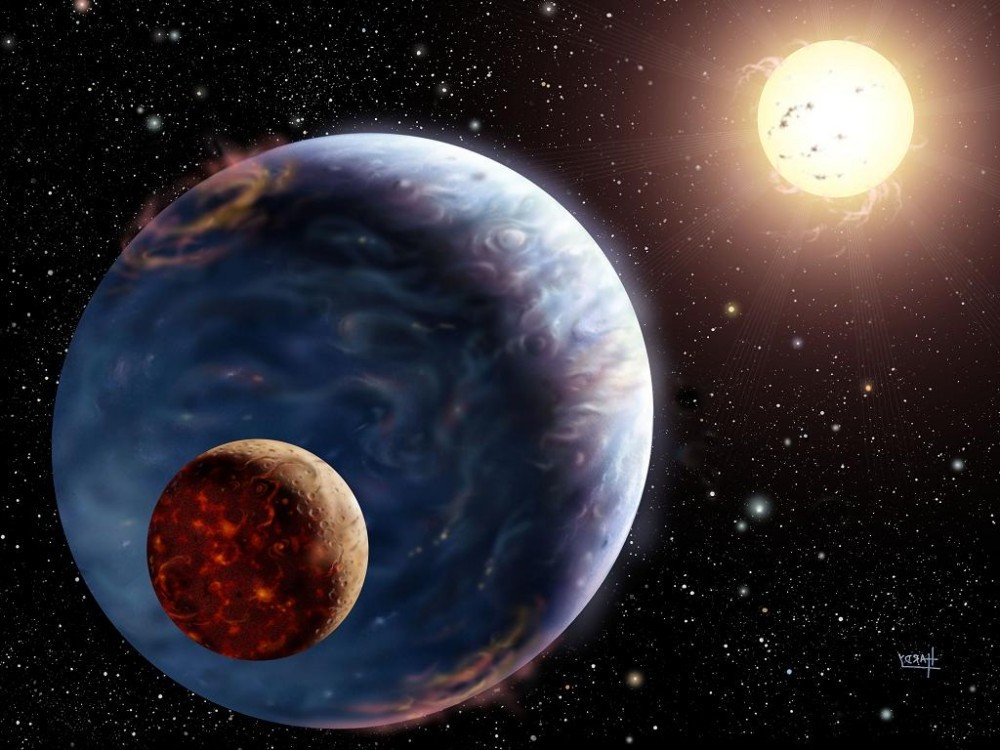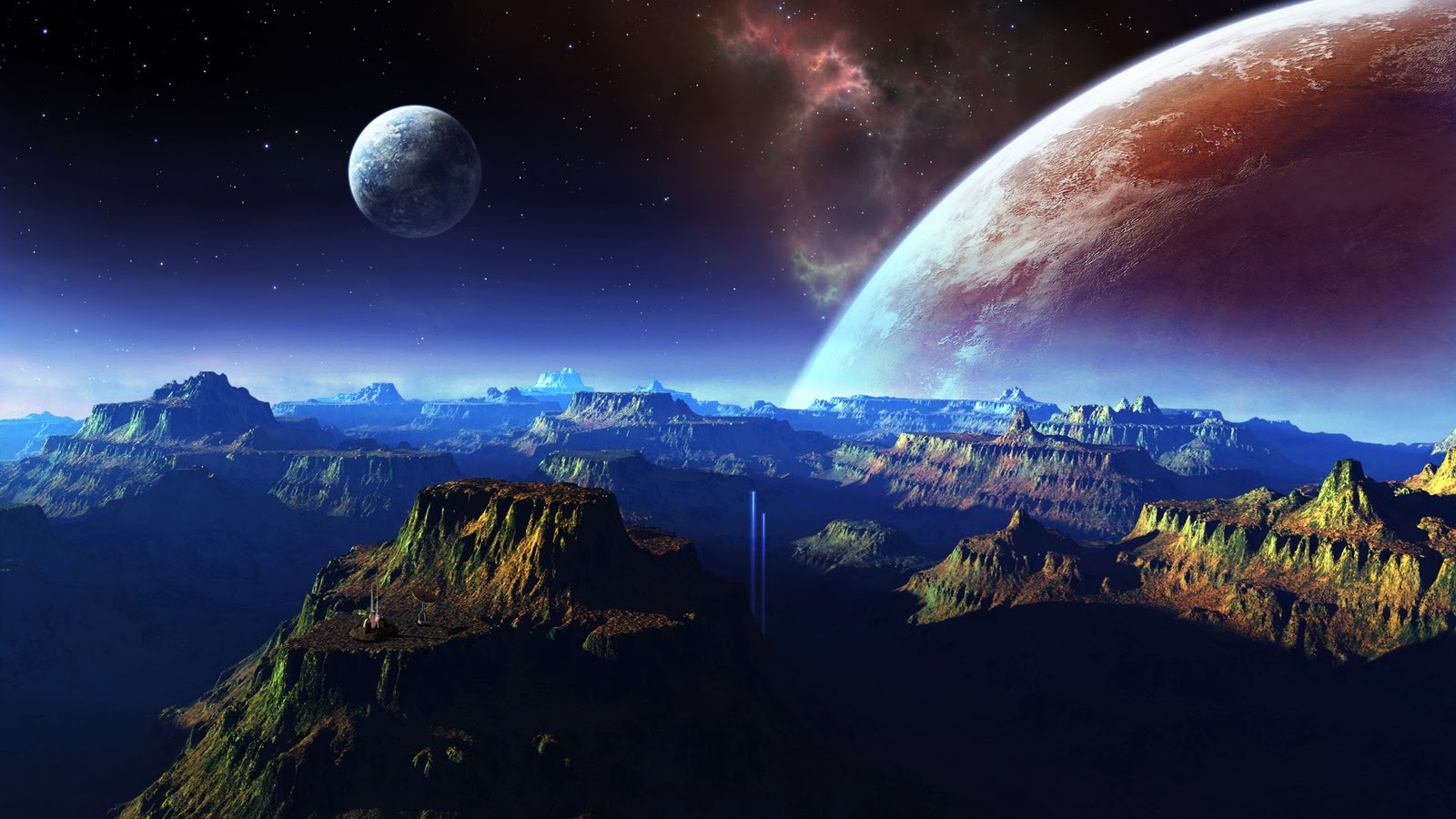Kepler telescope may have detected a satellite in an exoplanet

The Kepler telescope, along with the Hubble telescope, is one of the most effective in the history of astronomy. Orbital telescopes gave scientists so much information that its processing will continue for many more years, especially if we consider that both systems remain in service. As for the Kepler telescope, with the help of it, scientists have discovered many exoplanets, among which there are those whose conditions may well be suitable for protein life.
At the moment, scientists have described and cataloged many earth-like planets. There are really a lot of them, and in one of the systems, TRAPPIST-1 , there are seven of them at once. But most of the exoplanets found are still hardly habitable, because according to their characteristics they resemble gas giant planets from our Solar System. Well, do not pay attention to them and search only for the twins of the Earth? Not at all, and the giant planets of neighboring stars may be of interest. Or rather, not only they, but also their companions. Now a group of astronomers has published an article that talks about the possible detection of the exoun - satellite of exoplanets.
Why should it bother anyone at all? First, it is still the first discovery (or rather, a possible discovery) of this kind. Secondly, in our Solar system on many satellites not suitable for the existence of the life of the planets (Saturn. Jupiter) there is liquid water. This is, first of all, Enceladus and Europe. So, if other planetary systems that are at a distance of many light years from us have satellites, they may have suitable conditions for living organisms. As mentioned above, scientists should not write off exoplanets discovered that are not suitable for any reason to the definition of "habitable." The moons of such objects can be much more hospitable.
But how can exoluna be detected? Almost exactly the same as scientists are looking for exoplanets - by changing the luminosity of a star as it passes through the disk of the planet with its satellite. It is clear that in this case the equipment used by scientists must be extremely sensitive, and the software that processes the information received must be productive. In addition, while experts are not able to "see" satellites of relatively small exoplanets. In order for the exolun to be detected, both the planet itself and its satellite must be massive .
Scientists who search for exolun in their work describe the difficulties faced by the researcher when searching for satellites of distant planets. For example, exoplanets with satellites available for observation may not be so much. The fact is that the planet must be relatively close to its star, so that scientists can detect the dynamics of the falling luminosity of a star, corresponding to the passage through the disk of the exolar, rotating around the exoplanet. In addition, the period of time during which a satellite can be detected is not so long; the fortune of a researcher already plays a role here. And thirdly, the person himself is not able to find anything in the received pictures, the machine should do it. More than 100,000 machine hours have already been spent searching for the exolun.

Because of all these difficulties, the team decided to choose two “planet-satellite” models that are worth looking for. This is a planet with a single satellite and a gas giant with several ex-moon. However, in this case there are difficulties associated with insufficient sensitivity of tools created by man. For example, researchers have already shown that, being in the capacity of an observer in the stars adjacent to the Sun, it is impossible to detect the largest satellite of Jupiter Callisto using the proposed type of data analysis and systems for studying.
So far, only one exoplanet scientists have discovered the possible presence of a satellite - the giant exoplanet "superupiter" KEPLER-1625B. This is possible because, although the dynamics of the fall in the luminosity of a star as it passes through the disk of the planet corresponds to the predicted figures, it is difficult to say for sure whether there is a satellite or not. Many months of observation and thousands of hours of calculations are needed to confirm. And then, the probability of error will not be excluded even in this case.
In October of this year, a team of scientists will again be able to observe the passage of the KEPLER-1625B across the disk of its star. It is possible that the data obtained during the observations will help confirm the probability of the existence of an exolun.
All Articles